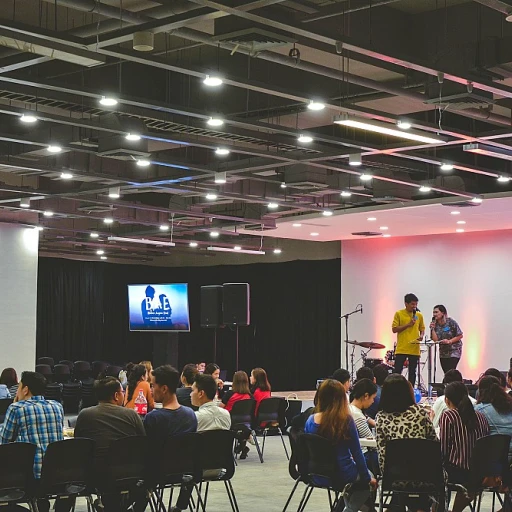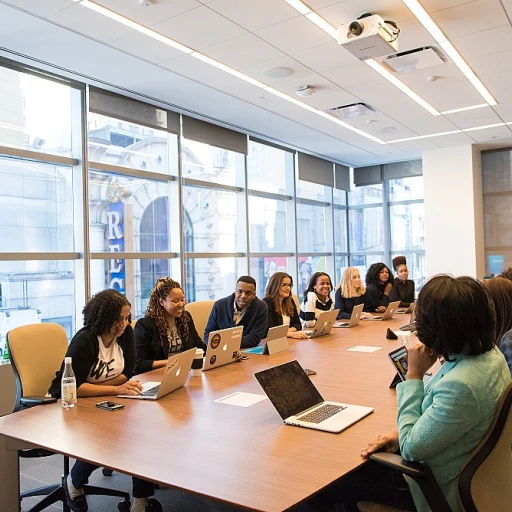
Understanding Future-Ready Hiring
Grasping Modern Hiring Landscapes in HR
In today's volatile economic environment, embracing future-ready hiring practices is essential for any HR department aiming to build a more resilient talent pipeline. Organizations are increasingly seeking talent that can adapt to shifting job landscapes and emerging career trajectories. This approach helps businesses stay competitive and responsive to market demands. One can no longer rely solely on traditional HR methods when it comes to creating robust job pathways. Elements like workforce development and tailored training programs are becoming vital. To effectively implement these practices, policies need to be adapted strategically for future needs. By understanding and anticipating changes in labor markets, HR can offer employment services that are more aligned with economic development goals. Leveraging platforms and tools that support upskilling and reskilling initiatives can also help guide job seekers on their career pathways, ensuring that they not only meet current job requirements but are also futurefit. Organizations must refine their hiring policies to remain adaptable, ensuring methods of talent acquisition and retention are aligned with future demands. This could mean integrating features like pathways platforms that support continuous learning and career development. Moreover, the process of recruiting a modern workforce should involve the design and implementation of a robust privacy policy and user agreement, ensuring transparency and trust. This will encourage candidates to engage more openly with any request and submit their applications or inquiries confidently, free from concerns about data misuse. To explore more about transitioning your HR practices and understanding the need for an ATS system in dynamic company setups, you might find this educational blog on ATS systems a beneficial read.The Role of Technology in HR Interviews
Technology Revolutionizing HR Practices
Future-ready hiring practices are increasingly relying on the integration of advanced technologies. This transformative shift is reshaping the traditional landscape of HR interviews, allowing companies to effectively tap into a broader talent pool and refine their recruitment processes. The implementation of AI-powered platforms and automated systems streamlines various stages of the hiring process—from sourcing candidates to conducting initial screenings. For instance, leveraging a web platform that manages talent pipelines can significantly enhance recruitment efficiency. These innovations aid HR professionals in identifying future-fit candidates who are not just suitable for the job today, but also have potential for career development and long-term growth. Job seekers are also influenced by these technological advancements. They benefit from employment services that offer career copilot functionalities, which help them navigate through potential career pathways more effectively. This tailored approach can bolster workforce development efforts and create more dynamic labor exchanges. However, the increased reliance on technology comes with responsibilities. HR departments must navigate the complexities of economic development and ensure compliance with privacy policies and data protection laws, such as maintaining cookie policy transparency. By consistently reviewing their procedures and user agreements, organizations can uphold trust and secure user engagement. HR policies should also be adaptive to changes, addressing any issues with submission procedures—whether it’s due to wrong submitting forms or oops wrong entries. By regularly updating the submission received protocols, companies can refine their recruitment processes and make them more accessible, ensuring robust pathways for diverse job seekers. In conclusion, harnessing technology in HR interviews is crucial for future-fit hiring practices, enabling organizations to stay competitive in an ever-evolving job market.Skills for the Future: What Employers Are Looking For
Identifying Tomorrow's Skills in Today's Job Market
The landscape of skills required for future success is in constant evolution. Employers are looking to build talent pipelines that seamlessly integrate with their central goal of creating a future-fit workforce. To achieve this, organizations are placing increased emphasis on understanding not just the immediate skills required, but also those that will be essential as industries adapt to technological advancements and economic shifts. Unlike past recruiting practices, which focused heavily on specific technical skills, future-ready hiring is all about competencies that extend beyond mere knowledge. For instance, the ability to navigate digital platforms and tools, such as the latest economic development services or employment services systems, demonstrates a candidate's readiness to embrace innovation. Upskilling and reskilling opportunities further contribute to this readiness, allowing candidates to continuously refine their capabilities and stay relevant. Consider soft skills and traits that reflect adaptability, such as problem-solving, critical thinking, and effective communication. These are crucial in forging robust career pathways for job seekers. As the workforce becomes more digitalized, the talent that can demonstrate a blend of these soft skills with technical proficiency will likely be in high demand. Additionally, organizations are no longer operating in isolation. They are now expected to collaborate across diverse sectors, embracing platforms that enable seamless workflows. This collaboration requires a new breed of professionals who are adept at using new platforms and technologies—sometimes even participating in system development. The capability to request demo insights into such products can provide job seekers with a unique advantage. As HR professionals refine their strategies to cultivate future-fit talent, they must also ensure alignment with the company's broader user agreement and privacy policies. This alignment secures a comprehensive approach where skills development aligns with organizational and industry standards. Therefore, for job seekers aiming to align their abilities with future market demands, exploring ways to upskill and reskill through platforms offering workforce development resources can prove invaluable. Such platforms often provide insights on economic development trends and career copilot services, helping candidates choose the right pathways. Meeting the future head-on requires a strategic approach to hiring that actively includes diversity and inclusion as a core component. This ensures that companies are not only seeking skills aligned with futurefit demands but are also incorporating diverse perspectives in policy formulation and execution. For more detailed discussions on becoming equipped for the future of work, please visit understanding the importance of a staff confirmation letter in HR interviews.Adapting Interview Techniques for a Changing Workforce
Reimagining Interview Techniques for a Dynamic Workforce
As the landscape of employment continues to evolve, so too must the methods we use to assess and select talent. The traditional interview process, often rigid and formulaic, is giving way to more dynamic approaches that better align with the needs of a future-fit workforce. This shift is not just about keeping up with trends; it's about ensuring that the hiring process is as effective and inclusive as possible.
One of the key changes in interview techniques is the integration of technology. Platforms powered by artificial intelligence and machine learning are transforming how we evaluate candidates. These tools can help identify the most promising talent pipelines by analyzing data and predicting future performance. However, it's crucial to balance technology with human insight to ensure that the process remains personal and fair.
Moreover, interviewers are now focusing more on skills that align with future economic development. This includes upskilling and reskilling opportunities that prepare candidates for the challenges of tomorrow. Employers are increasingly interested in candidates who demonstrate adaptability and a willingness to learn, as these traits are essential for navigating the pathways of a rapidly changing job market.
Another significant shift is the emphasis on diversity and inclusion. Future-ready hiring practices prioritize creating a workforce that reflects a wide range of perspectives and experiences. This not only enhances creativity and problem-solving but also aligns with broader societal goals of equity and inclusion.
For job seekers, this means preparing for interviews that may look different from those of the past. Candidates should be ready to engage with new technologies, demonstrate their ability to adapt, and articulate how their unique experiences contribute to a diverse and inclusive workplace. By embracing these changes, both employers and candidates can ensure they are ready for the future of work.
Diversity and Inclusion in Future-Ready Hiring
Championing Diverse Talent Pipelines
In today's rapidly evolving job landscape, fostering diversity and inclusion within the workforce is not just a trend but a necessity for economic development. Future-ready hiring practices embrace these values, recognizing their role in shaping a dynamic and inclusive talent pipeline. Recruiters must continually refine their strategies to ensure a broad representation of unique backgrounds, experiences, and perspectives. This effort begins with a solid understanding of the current and future demands of a diverse labor exchange. HR professionals are tasked with identifying pathways to attract diverse talent capable of meeting both immediate and future challenges. In doing so, organizations can build a future-fit workforce through effective workforce development initiatives. Here are key considerations for future-ready diversity in hiring:- Redefine Job Descriptions: Craft job postings that are inclusive, avoiding biased language that might unconsciously narrow the pool of candidates. This helps attract a wide range of applicants who can contribute different perspectives and ideas.
- Expand Talent Pools: Utilize platforms and services that connect to a broader, more diverse group of job seekers. Engage in partnerships with community organizations and educational institutions to develop talent pipelines that reflect the diversity of the wider community.
- Implement Bias-Free Interview Processes: Train hiring managers on unconscious bias and develop interview techniques that focus on competencies and skills rather than demographic characteristics.
- Continuous Training and Development: Offer upskilling and reskilling programs to existing employees, enabling them to adapt to new roles and responsibilities. This commitment not only aids retention but also promotes an inclusive career development culture.












